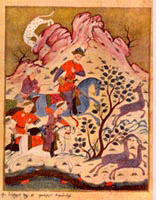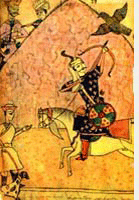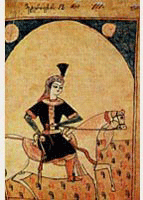Georgian Folklore
 The Georgian Folklore course views the traditional oral (myths, legends, tales, poetry, songs), customary (folk religion, festivals, dances, "law of love"), and material (architecture, food, costume) culture of different and mostly less known socio-cultural groups and border regions of Georgia. Special emphasis is given to the traditional regional folklore as a peasant culture of the peripheries. The course also presents a history of folklore and ethnographic studies in Georgia. Among different topics, the course discusses how the broadening of anthropological knowledge created a basis for the development of a widespread criticism towards different elements of the traditional life-style, and how this criticism aided a process of innovation of some of the old traditions.
The Georgian Folklore course views the traditional oral (myths, legends, tales, poetry, songs), customary (folk religion, festivals, dances, "law of love"), and material (architecture, food, costume) culture of different and mostly less known socio-cultural groups and border regions of Georgia. Special emphasis is given to the traditional regional folklore as a peasant culture of the peripheries. The course also presents a history of folklore and ethnographic studies in Georgia. Among different topics, the course discusses how the broadening of anthropological knowledge created a basis for the development of a widespread criticism towards different elements of the traditional life-style, and how this criticism aided a process of innovation of some of the old traditions.
The Georgian Folklore Course was offered in 2005 at the Department of Anthropology, University of California, Berkeley.
 The extensive collecting, publishing, and translation of Georgian folklore texts started in the second half of the 19th century. Translators of the Georgian folklore were mostly European linguists and writers interested in Georgian Language and Culture. Among these scholars are Marjory Wardrop, Robert Stevenson, David Lang (Great Britain), Adolf Dirr, Robert Bleichsteiner, Hans Faehnrich, (Germany), Hans Vogt (Sweden), Georges Dumezile, Rene Lafon (France), Jaromir Jedlichka (Czech), Marton Istvanovits (Hungary), George and Helen Papashvili (USA), Kevin Tuite (Canada), and others.
The extensive collecting, publishing, and translation of Georgian folklore texts started in the second half of the 19th century. Translators of the Georgian folklore were mostly European linguists and writers interested in Georgian Language and Culture. Among these scholars are Marjory Wardrop, Robert Stevenson, David Lang (Great Britain), Adolf Dirr, Robert Bleichsteiner, Hans Faehnrich, (Germany), Hans Vogt (Sweden), Georges Dumezile, Rene Lafon (France), Jaromir Jedlichka (Czech), Marton Istvanovits (Hungary), George and Helen Papashvili (USA), Kevin Tuite (Canada), and others.
There are many interesting anthologies of Georgian folk tales published in Russian; among them, the most popular ones are: "Georgian Folk Tales, Hundred Tales," 1954-74, "Georgian Folk Tales, Myths and Legends," 1984-87, "Georgian Fairy Tales," 1985. These translations and their revised editions count more than 6 million copies.
Selected Georgian folk tales, most of which have never before been translated into English, are valuable reading texts for students of Georgian language and folklore and have been included in the comprehensive program of Georgian language and Culture.

The folk tales are available through the following publication:
Shorena Kurtsikidze & Vakhtang Chikovani, Ethnography and Folklore of the Georgia-Chechnya Border: Images, Customs, Myths & Folk Tales of the Peripheries, Munich: Lincom Europa, 2008.
All folk tales have been translated from the anthology "Georgian Fairy Tales," Selected and edited by M.I. Chikovani and V.M. Chikovani. Vol.1-2, Tbilisi, 1994 (in Georgian).
Additional Information:




